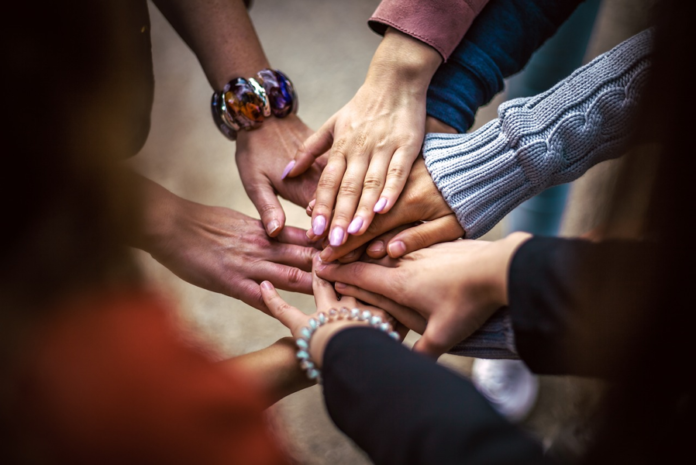Here are the most effective ways to build them
Many people believe that belonging to a community is a positive thing, and this has been proven by the number of online and offline communities in different fields of life, from hobbies to professional groups. The main two reasons are psychological and functional.
As human beings who have some psychological needs, including social connection, belonging to a community fulfills those feelings. If you have a hobby of running or playing games, it’s always a valuable asset to have a group of people who are always open to share your interests, help you, and so on.
On the other hand, amid the growth of e-commerce and digital shopping, our physical touch is severed from reality. We do not have a fully immersive experience when purchasing a sneaker or a washing machine. This is when the community on online platforms shines as a navigator, allowing customers to read the reviews of their peers, and get to know about their purchasing experience before buying an item. We separated the most effective ways in which digital platforms integrate customer communities for a better and more immersive experience.
The way gaming communities grew
It is not a secret that today’s technological landscape created a super attractive gaming environment. Moreover, when it comes to certain types of activity, such as online casino gaming, they are far ahead of their traditional counterparts in terms of innovative approach, payment flexibility, and so on. The reason gambling sites could catapult their success and attract so many players worldwide can be found in online communities, along with other features.
Yes, players have a community where they can share information, ask for feedback, and receive some marketing and promotional news, but let’s look at the other side of the coin. Online communities are equally valuable for these gambling platforms or other types of gaming sites beyond building user loyalty. Again, talking about functional aspects, communities are real and unique boosters.
Every software development team has a quality assurance specialist who analyzes the work of the website, or application and finds the pitfalls. But it cannot compare with what the users who spend a lot of time on those digital platforms may notice and report. Taking advantage of the presence of these user groups, online platforms can continually gather feedback and improve their gaming websites.
The Power of Fitness Communities
Transformation. Hard work. Triumph. The fitness industry thrives on these concepts, pushing us to be our best selves. But let’s face it: going it alone is tough. It’s kind of a grind. That’s where fitness communities step in, turning that lonely feeling into a shared journey. CrossFit boxes, running clubs, online groups—these spaces supercharge your fitness in unexpected ways. And it’s not just an example: Studies show that up to 37 percent of individuals who buy a gym membership, have a low attendance especially in the first 3-6 months.
However, we believe that when people have companions they are more prone to stick to their exercising routine. Think of it like this: a built-in support system. Cheerleaders, motivators, accountability partners, all rolled into one. When you’re surrounded by people who get it, who share that passion for fitness, it’s contagious. Suddenly, that extra rep doesn’t seem so daunting. Skipping a workout? Not when your crew is counting on you.
And it’s more than just emotional hype. It’s knowledge, too. A treasure trove of tips, tricks, trends … maybe even your next gym buddy. A little friendly competition never hurt anyone, right? Race you to the finish line!
Fitness businesses are catching on. They know a strong community transforms a sterile gym into a second home. It’s the difference between a hotel and your favorite cozy corner—one’s just a building, the other’s where your heart is. And where the heart is, loyalty follows.
Tech Titans and Their Loyal Legions
Apple. Tesla. Those brands don’t just have customers, they have devotees. People camping out for new releases, sporting logo tattoos … it’s borderline cult-like. But it’s no accident. It’s the result of carefully nurtured communities, where belonging and excitement intertwine. And the numbers back it up: 91 percent of people believe in the power of social connections. Online forums, social media groups, even real-life meetups—these are the watering holes for tech enthusiasts. Places to geek out over the latest gadgets, troubleshoot together, revel in shared passions. It’s like a virtual (or actual) high-five from someone who gets your obsession with the new chip specs.
For companies, this is pure gold. An endless focus group, bubbling with unfiltered opinions, ideas, and feedback. Want to know what your customers really think? Here’s the place. It’s a direct line to their hearts and minds, shaping products,sparking innovation, even predicting future trends.
Apple’s legendary fan base is a prime example. They’re not just consumers, they’re evangelists, fiercely defending the brand, offering feedback, beta testing, even creating tutorials for fellow users. This isn’t just loyalty, it’s active participation in Apple’s success. A feedback loop that keeps them on top.
But it’s not just the giants. Startups, take note! Your early adopters aren’t just customers, they’re your first community. Nurture them, engage with them, build that sense of belonging. They’ll be your biggest cheerleaders, spreading the word, boosting your growth in ways no ad campaign ever could.











